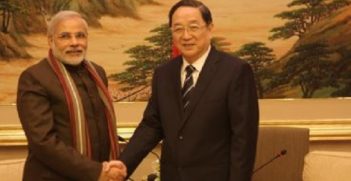The reign or reining in of Chinese monopolies
What are the implications of China’s anti-monopoly law?
Surprise raids by Chinese government officials on the offices of major multinationals in China to catch out monopolistic business activity have created perceptions of bias against foreign firms in the enforcement of the anti-monopoly law.
Bias or not, what the raids and the reaction demonstrate are the conflicting objectives that surround the next steps in China’s economic reforms. On the one hand, policy seeks to shake out entrenched vested interests around state-owned and protected monopolies. On the other, it seeks to protect and strengthen the still significant role of state-owned enterprises in the economy.
The highly publicised raids form part of what Chinese officials have called an ‘anti-monopoly campaign’. State media says thousands of firms have been scrutinised, including Chinese, Japanese, and Western firms. Tens of millions of dollars have already been paid by companies that have been judged to be engaging in unfair monopolistic pricing. Other businesses have simply dropped their product prices in an attempt to deflect being investigated.
A firm will charge a higher price for its products if it faces no competition, extracting monopoly profits at the expense of consumers. Diminished competition may be the result of a number of things. Regulators can restrict competition in some markets creating monopoly rents, or firms themselves might drive competitors out of business through predatory pricing or create monopoly power by differentiating their products from substitutes through branding.
In any market economy competition should be promoted — or at least anti-competitive behaviour should be prevented with anti-monopoly or competition law. The focus of competition law needs to be on tackling anti-competitive behaviour by large firms that already possess market power, cartels and anti-competitive mergers. Creating and implementing China’s anti-monopoly law is thus a crucial step in China’s commitment to the welfare-enhancing function of a market economy.
Chinese consumers are frustrated at the high costs of some foreign products. The higher cost of a Mercedez-Benz or a Starbucks coffee in China (both substitutable for a Chinese Hongqi limo or a New Island latte) is not necessarily evidence of monopolistic pricing, but more likely the result of the premium that Chinese consumers are willing to pay for these brands and the quality they guarantee.
A bigger problem than overpriced frappuccinos is that focusing public attention on expensive foreign goods deflects attention from the more complicated issue of untangling home-grown monopolies. China’s economy today continues to be characterised by monopolistic structures protected more because of politics than economics. These entities impede economic growth and put consumer welfare a poor second.
The story of China’s path towards its contemporary ’socialist market economy’ can only be understood as a story about monopolies, and the gradual de-monopolisation of Chinese industries from their origins in the formerly centrally planned economy.
Under central planning, industrial production was monopolised by the state. Competition between firms did not exist. Their production and markets were set by quotas allocated by planners, such that industrial profits were high. After China’s economic reforms in 1978, some competition between firms was allowed, and barriers to entry into industrial production were removed. Township and village enterprises, followed by private enterprises, entered into high-profit industrial production and quickly reduced prices and state profits through competition in the market. The activity of small and medium sized firms has since continued to flourish, and as Nick Lardy recently pointed out, it is these private firms that make the biggest contribution to China’s economic growth, rather than the many large SOEs.
Many of China’s SOEs were privatised in the 1990s as they became loss-making in the face of new more efficient competitors. Those that survived privatisation were necessarily more profitable, largely because they remained monopolistic business structures to varying degrees, whose monopolies were entrenched by the state. They remain protected against private and foreign competition, for example through restrictions on entry, in the form of easier access to cheap credit from state banks, or through exclusive access to lucrative government construction or service contracts. The World Bank calls these ‘administrative monopolies’ the number one problem facing private enterprise in China today.
Ideology and politics make privatisation of these giant SOEs unlikely for some time yet. And ideology aside, there is a strong and understandable desire at many levels of society to build up the competitive power of Chinese businesses, including SOEs, as ’national champions’. The risk is that the state’s reflex to protect Chinese firms by selectively enforcing the anti-monopoly law, like an over-protective parent, might suffocate their capacity to step up and compete with the world’s leading firms in technology, innovation, and quality, domestically and abroad.
Chinese regulators will need to fully and rigorously enforce the anti-monopoly law across the full spectrum of firms operating in China’s markets, foreign, private and state-owned alike if Chinese firms are to grow strong and competitive at the same time.
Patrick Williams is a visitor at Peking University as an Endeavour Award Postgraduate Scholar and graduate student at The Australian National University.
This article was originally published on East Asia Forum on 16 December 2014. It is republished with permission.




